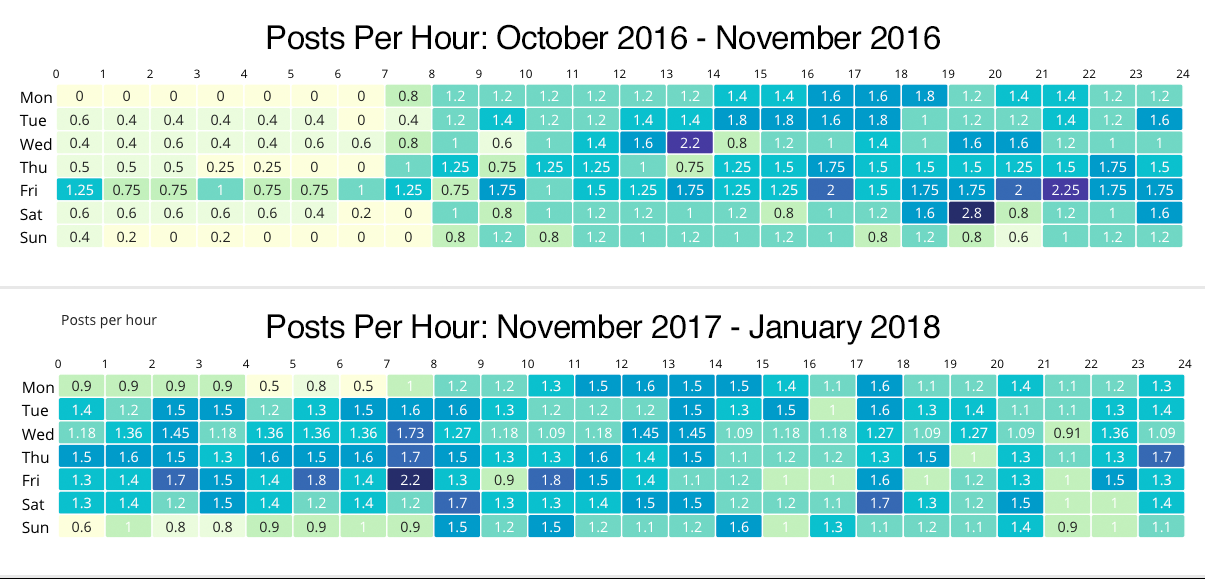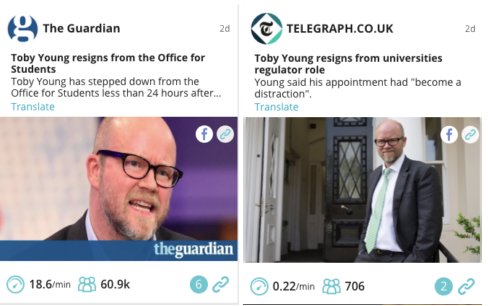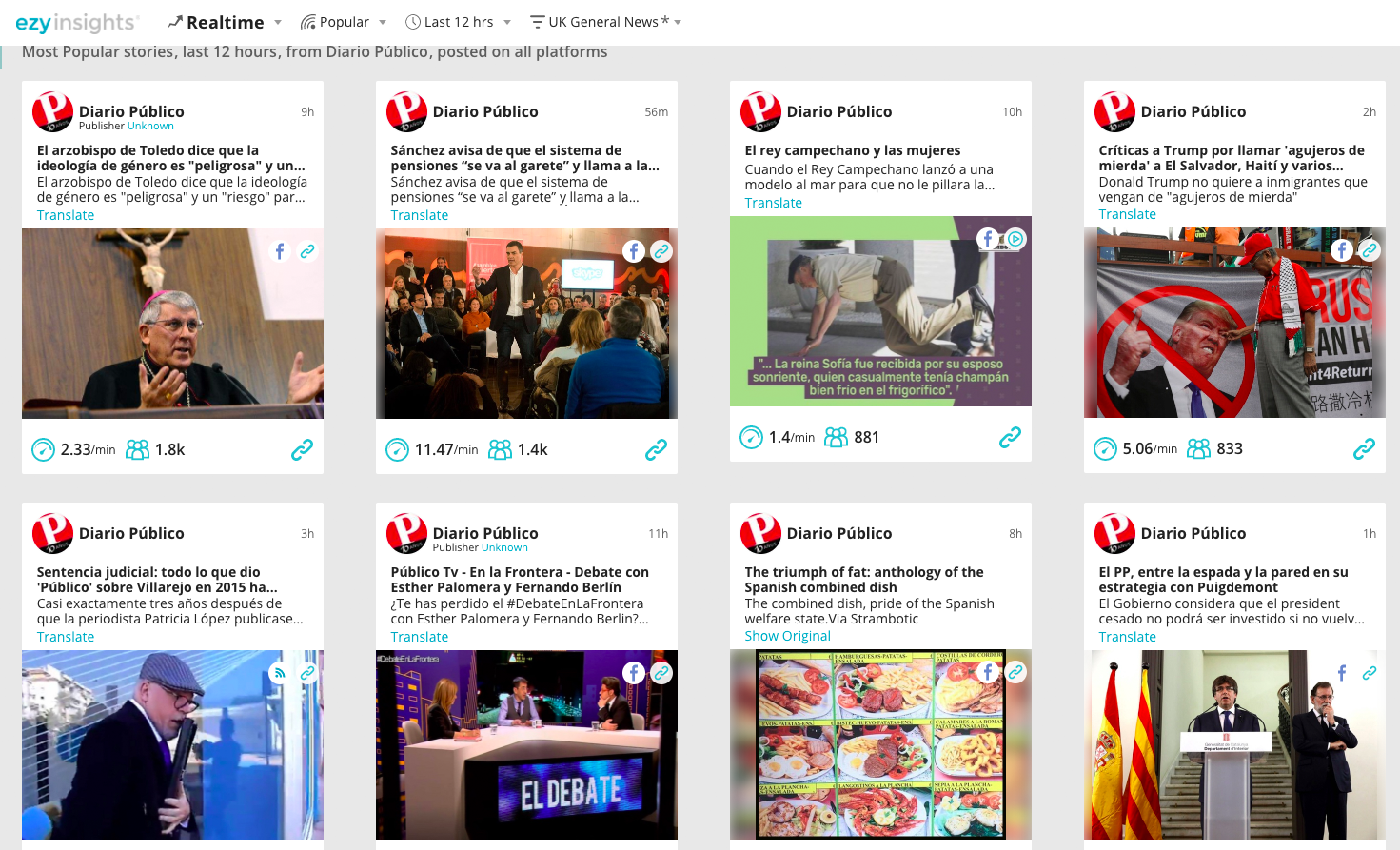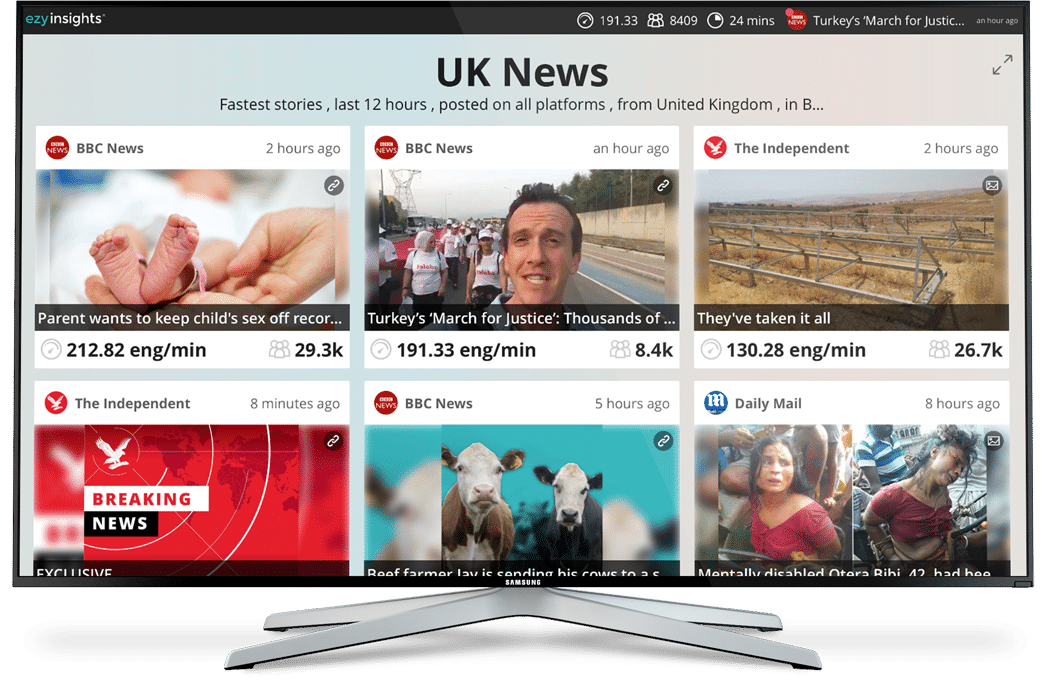A recent post by the International Journalists' Network highlighted Spanish publisher Diario Público and the success that their strategic changes have brought.
"How Spain's Público redefined its strategy and grew its audience by 40 percent"
We are always excited to read about the success of our customers, and this article is littered with fantastic insights which we will explore in more detail. The aim of this post is to shed further light on the data that can support quality decision making.
The article is focused around Virginia Alonso, the dynamic, forward thinking director of Público who joined in October 2016.
"One task Alonso took on was to professionalize the use of social media in the newsroom. The editorial team began to schedule Facebook posts on weekends, to measure those posts that worked better and to make Facebook Live broadcasts."
This single line contains three great insights into what changed at Público.
1. Weekend scheduling
Scheduling posts on weekends or times outside of regular working hours might seem obvious in hindsight, but without knowing the times when your audience and potential audience is active, you will be guessing. Engagement Heatmaps are a great way to see where gaps in post scheduling occur, and at which time 'hotspots' of engagement happen. They help show how your social audience really behaves.
Let's compare Público's posting spread in two time periods - in October 2016 as Alonso started, and then again in late 2017/early 2018

The charts above show the posts per hour on average in each time period. Earlier on it's clear that articles were not being posted in the early morning hours. The lower chart illustrates how with the new posting strategy in place, frequency was spread out over many more hours of the day. This gives Público more of a chance of capturing the fluid audience who are consuming news throughout the day and night.
2. "Measuring those posts that worked better"
Probably the most obvious advantage with regular data is the ability to set up a constant feedback loop. When combined with the editorial expertise of the newsroom, data becomes powerful insights that can fuel constant iteration. Some of the typical use cases for publishers like Público are:
(i) Real-time measuring
Keeping track of the daily news cycle to see how each story is doing against competitors. Who is winning, what headline they used, what format the post was (video, photo, article), how it was illustrated. Sometimes large amounts of data provide seemingly simple insights that generate permanent improvements. This has been the case for publishers posting articles based around a person. Almost without exception, photos that show a human face with expression clearly visible outperform wider or full body shots in terms of generating engagement on social platforms.

(ii) Daily reviews
Gathering the top posts from the day before of a publisher's own posts and that of its rivals. As part of a morning editorial meeting, breaking down what performed well and taking something away across the board.
Celebrating when a post does well is fine, but the real value is understanding why it did well, which can only be done with a combination of data and editorial input.

3. "[Público] created a small team in charge of breaking news and social media, which didn’t exist until then."
For any traditional publisher, dedicating resources to a whole new team can be a big step, one that many still haven't taken. But what should a breaking news and social media team look at beyond a couple of TweetDeck filters? The most used part of EzyInsights is our realtime view, customised to the news landscape or verticals relevant to each publisher. Big breaking news happens on Twitter mainly, but when it comes to stories that are picking up traction with the mainstream the engagement generated on Facebook is the number one flag. Teams with EzyInsights will usually have at least one instance of the TV Mode dashboard within sight.

A successful breaking news team might spread the areas they are focusing on across the team. Constantly monitoring specific verticals or communities for stories and events relevant to their audiences. The big viral news story of the day might be inappropriate for one set of readers, while a small local news story that is over-performing might be perfect for another.
Measuring Success
No matter how many different measures or metrics you may use to track success, if traffic is increasing, it's likely to be a good sign. Since implementing Alonso's strategies in early 2017, Publico's improvements have been convincing:
the site is growing its audience 40 percent year-over-year almost every month since February, said Alonso.
Over 2017, they've generated over 20 million likes, comments and shares on Facebook, an average of over 55,000 per day. This puts them in the same league as Spanish giant El Pais and La Vanguardia, and ahead of others such as ABC.es and El Mundo.
With thanks to IJNet for their original article by Maite Fernandez.
If you'd like to know more about the data presented here and how to track similar metrics for yourself, sign up for a trial here.
